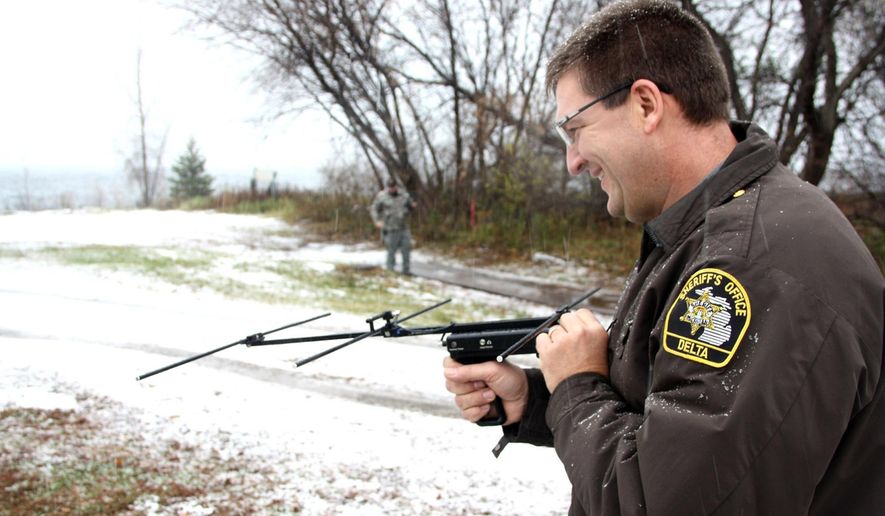ESCANABA, Mich. (AP) - Tracking technology is now available to search and rescue personnel to help find residents who wander due to cognitive or neurological disorders such as Alzheimer’s Disease, autism and Down Syndrome.
The Delta County Sheriff’s Office purchased the tracking gear from Project Lifesaver International, which uses technology to locate an individual who wanders and is equipped with a radio transmitter wristband, according to the Daily Press of Escanaba (https://bit.ly/1xzf4ES ).
Tate Thompson, director of the Delta County Search and Rescue Team, attended the Train the Trainer course last week offered in Escanaba by Project Lifesaver International. Thompson is now certified to teach other rescuers and family members of program participants about the tracking program.
“When needed, surrounding participating counties can also use their equipment to help us find our people,” said Thompson, explaining there are both vehicle-mounted and hand-held tracking units available.
Thompson was trained by St. Croix County Deputy Neil Johnson from Hudson, Wisconsin, who is an approved instructor with Project Lifesaver International. The program started in 1999 at the Search and Rescue Company of the Chesapeake Sheriff’s Office in Virginia, said Johnson.
“Project Lifesaver is a program for at-risk wanderers, people who don’t realize they need help or can’t ask for help,” he explained.
When the time comes for enrollment, the appropriate residents and caregivers will be required to complete documentation and obtain some training. Residents enrolled in the program will wear a small personal radio transmitter around the wrist or ankle that emits an individualized tracking frequency signal. If an enrolled resident goes missing, the caregiver would notify 9-1-1. Trained emergency response teams would go to the wanderer’s area and use a directional antenna tracking device to connect with the individual’s specific frequency.
Most individuals who wander are found within a few miles from home, said Johnson. With the Project Lifesaver technology, search times are drastically reduced from hours and days to minutes. Recovery times for individuals on the Project Lifesaver program can average about 30 minutes - 95 percent less than standard operations.
The program is offered locally through the generosity of county residents, social services organizations, businesses and foundations such as the Walmart Foundation among many other financial contributors.
Delta County Sheriff Ed Oswald said the sheriff’s department has discussed bringing this technology to the county for a while.
“Over the last year, (recently) retired Sheriff Gary Ballweg and I made searching for funds to pay for the program our top priority under special operations projects. Because of the great community we live in, $10,000 was received in about seven months. We are happy that Project Lifesaver will be fully operational by January 2015 and we will inform the community when the program is ready to accept enrollments.”
A few jurisdictions in the Upper Peninsula offer Project Lifesaver or a similar life-saving tracking program. Those agencies are the sheriff’s offices in Menominee, Alger and Marquette counties. Tracking technology in these communities has been credited for quickly and safely locating several residents who have wandered including children and adults.
Partners in the Delta County Project Lifesaver program include the Retired Senior Volunteer Program at the Menominee-Delta-Schoolcraft Community Action Agency, Perspectives Adult Day Care, and the Delta County Search and Rescue Team.
___
Information from: Daily Press, https://www.dailypress.net




Please read our comment policy before commenting.